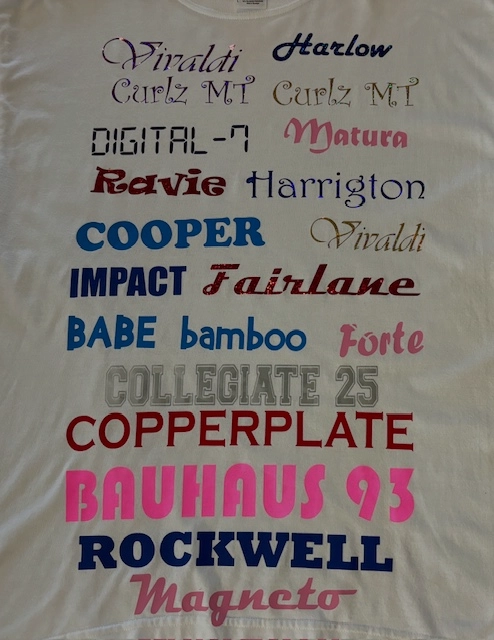Customized Lab Coats with Embroidery for Medical Professionals
Wiki Article
The Art of Custom Embroidery: Unlocking the Tricks to Creating Special and Unforgettable Layouts
The secrets to creating custom-made needlework styles that captivate the eye and leave a long-term impression lie in a delicate balance of technique, imagination, and interest to detail. As we dive into the globe of customized needlework, we uncover the nuanced interaction between thread choice, sew complexity, and style customization that boosts a plain garment to a job of art.Choosing the Right Needlework Threads
When choosing embroidery threads, what key variables should you consider to ensure the most effective results for your custom-made styles? The selection of embroidery thread is important in figuring out the last outcome of your stitched style. One of the key factors to consider is the material of the thread. Different materials such as cotton, polyester, rayon, and silk offer differing levels of luster, sturdiness, and texture. It is vital to choose a thread material that enhances the material you are stitching on and straightens with the preferred look of the layout.
Moreover, the weight or thickness of the thread plays a substantial role in the look of the embroidery. Thicker strings can include dimension and structure to your design, while finer threads are optimal for elaborate details and tiny message. Furthermore, considering the shade fastness and washability of the thread is critical to make sure that your custom designs keep their high quality and vibrancy over time. By carefully reviewing these elements and selecting high-grade strings that meet your details requirements, you can improve the aesthetic charm and durability of your stitched creations.
Exploring Various Stitch Strategies
To explore the world of 'Exploring Various Stitch Methods', one have to realize the intricacies and subtleties that each sewing method brings to the art of needlework. Various stitch techniques not only include aesthetic interest but additionally add to the general structure and dimension of the design. One prominent stitch technique is the satin stitch, which includes carefully stuffed parallel stitches to develop a smooth and shiny surface, ideal for filling out forms and developing strong lays out.On the various other hand, the backstitch is a flexible method commonly made use of for outlining and adding great information. It entails sewing backwards to produce a solid line of needlework. In addition, the French knot stitch includes a tactile element to designs, best for producing distinctive accents like blossom facilities or decorative touches.
Discovering various stitch methods permits embroiderers to play with light, shadow, and deepness within their designs, boosting the aesthetic charm and artistic quality of their needlework projects. By understanding numerous sewing approaches, one can open endless opportunities for creating distinct and unforgettable personalized needlework items.
Incorporating Personalized Style Aspects
Having explored the intricacies of different stitch techniques such as the satin stitch, backstitch, and French knot, the focus currently changes towards integrating individualized layout components in personalized needlework tasks. Personalized layout elements play a crucial duty in look these up making embroidery tasks absolutely read one-of-a-kind and remarkable.One more way to include tailored design components is by including signs or motifs that hold special meaning to the recipient or show their interests and personality. Including a favorite blossom, animal, or hobby-related symbol can make the embroidery style extra purposeful and personalized. In addition, picking shades that resonate with the recipient or line up with the intended theme can better improve the customization of the embroidery project.
Grasping the Art of Color Coordination

One key aspect of shade control is recognizing color theory. This includes recognizing exactly how various colors communicate with each other, the emotions they share, and exactly how they can be combined to create visually enticing layouts. By applying shade theory concepts, embroiderers can create harmonious color schemes that improve the general appearance of the layout.
In addition, taking notice of contrast is vital in shade sychronisation. Using contrasting colors can assist specific elements of the style pop, improve legibility, and produce an aesthetically vibrant embroidery piece. By mastering the art of color coordination, embroiderers can boost their designs and create unforgettable items that resonate with customers and viewers alike.
Enhancing Texture With Advanced Embroidery Stitches
Bullion knots, on the various other hand, can be used to create twisted, ropelike components that include a glamorous feel to the needlework. Experimenting with these sophisticated needlework stitches allows you to push the boundaries of standard needlework and develop genuinely unique and visually attractive textures in your layouts.
Final Thought
In final thought, the art of custom embroidery involves a combination of picking the appropriate strings, checking out numerous stitch strategies, including tailored style aspects, mastering shade sychronisation, and boosting structure with advanced stitches. By understanding and applying these crucial elements, embroiderers can create distinct and remarkable designs that display their imagination and ability. Embroidery lovers can open the tricks to creating gorgeous and custom pieces that attract attention and leave an enduring perception.Report this wiki page